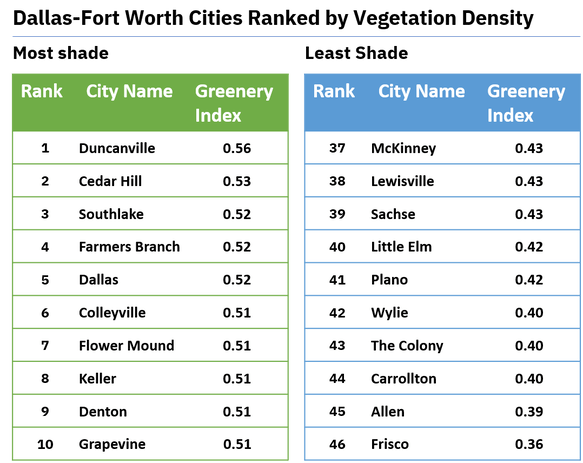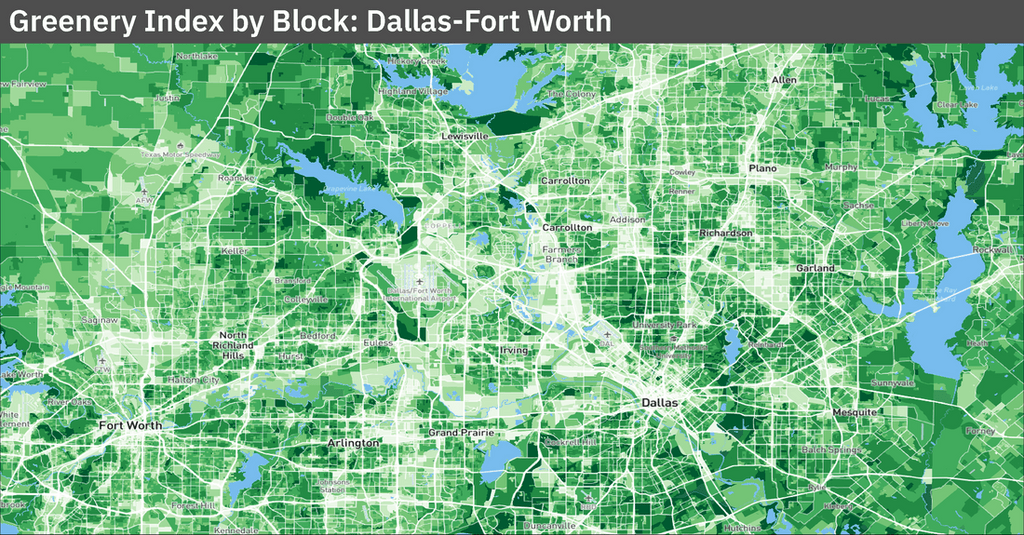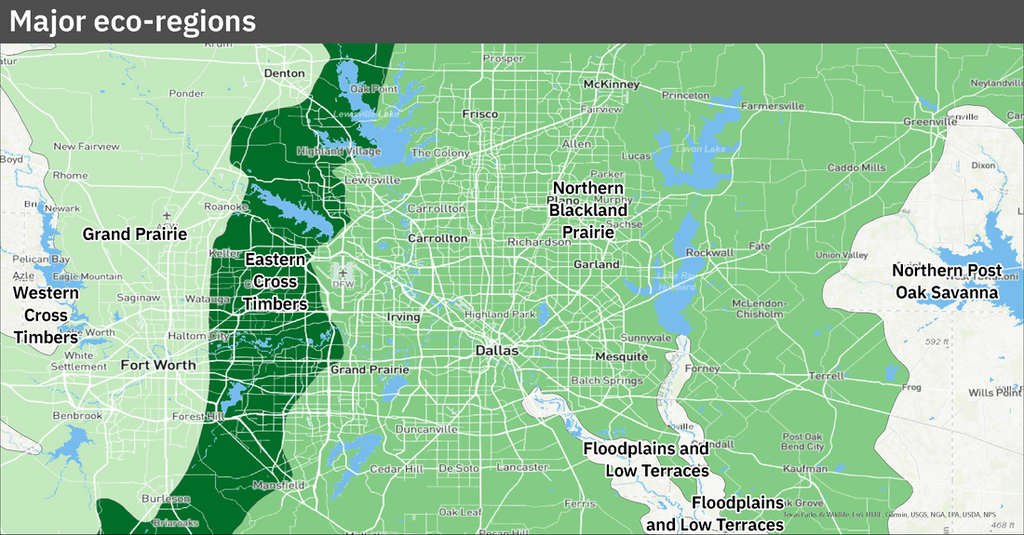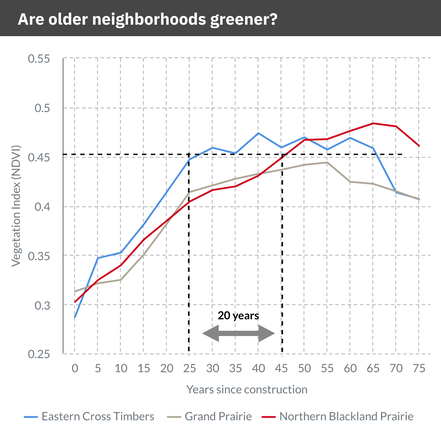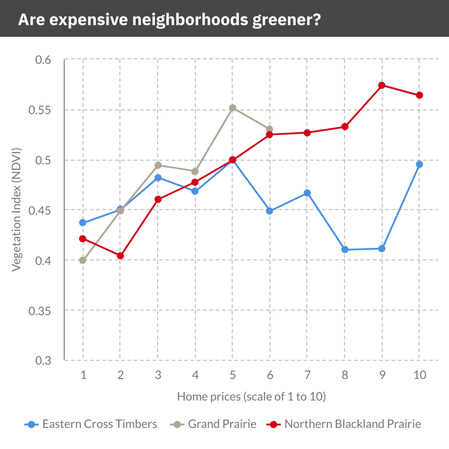Heat, sunshine, and the housing market
100+ degrees and nary a cloud in the sky: these are typical peak summer conditions. Some years, it lasts only a few weeks. Other years, it could be two months or more. The shade under a tree during a Texas summer can certainly take the edge off the heat. During most of the day, people tend to avoid venturing outside in the sun. But, your house and your neighborhood are going to feel very different if they are under a canopy of leaves compared to just sitting out there baking under the direct sun. Areas without shade tend to accumulate a lot more heat during the day and radiate it back out at night, keeping an area much hotter than it otherwise would be. This means more energy costs, not to mention wear and tear on your foundation from the famously “expansive soils” of Texas that can crack the foundation slab supporting your house. Therefore, some shade is probably quite desirable.
The shadiest cities in the Metroplex
By using data from satellites, it is possible to measure the amount of greenery just about anywhere. We did this, and averaged it out within the limits of each city in the Dallas-Fort Worth area. The tree-lined enclaves of the Park Cities rank highly but don’t make it into the Top 10. Interestingly, the south side of the Metroplex has some very dense foliage: Cedar Hill and Duncanville, thanks to the green hills adjacent to Cedar Hill State Park that spills over into many of the residential areas.
The “Cross Timbers” cities of Colleyville, Flower Mound, Keller, Denton and Southlake also rank highly thanks to the narrow band of forest, called the Cross Timbers, that results in dense tree growth in these cities.
On the other extreme, we have cities in more of a prairie setting, as well as those that are newer and have fewer mature trees: Allen, Frisco, Plano, Carrollton, and The Colony. In these areas, most trees are concentrated in narrow bands on flood plains and creeks. To make this analysis fair, we focus on neighborhoods only (with single family homes), we exclude other non-residential land uses, and exclude flood plains.
Source: NDVI (Normalized Difference Vegetation Index), captured through Copernicus Open Access Hub of the European Space Agency Note: To make a fair comparison, flood plains (including creeks) which are not habitable were excluded. Limited to cities with 20,000 residents or more as of 2010.
Showing the greenery index in more detail, we start to see a lot of differences between neighborhoods at a micro level.
Source: NDVI (Normalized Difference Vegetation Index), captured through Copernicus Open Access Hub of the European Space Agency. The darkest greens correspond to an NDVI of 0.84 or higher, where the highest level is 1.0.
Are older neighborhoods shadier?
We looked at relationships between greenery and the age of the community, as well average home prices.
We expected older neighborhoods to be shadier, since trees grow larger over the years. Typically, neighborhoods start out quite barren after the land is cleared, and new trees planted along roads take time to grow.
Also, we expected certain areas such as the Eastern Cross Timbers to score higher, which is a 15-mile-wide belt of woodland that extends through areas like Flower Mound, Southlake, Colleyville, and Arlington, as shown below.
Dallas-Fort-Worth Level 4 Eco-regions. Source: Environmental Protection Agency
The averages do suggest that older neighborhoods tend to be leafier. The data also suggest that areas within the Blackland Prairie ecoregion (including Dallas and Collin counties) don’t reach “peak” green until about 60 years after they are built, meaning neighborhoods built in 1960 or earlier. Meanwhile, those in the Cross Timbers and Grand Prairie (not to be confused with the city of Grand Prairie) eco-regions, might reach that level of “green” in half the time. Also, the Cross Timbers areas reach what could be be considered a “high” level of green about 20 years faster than the other regions.
Source: Spatial Laser analysis
Higher-priced communities tend to be greener
Higher-priced homes tend to have more greenery, and this is clearest in the Backland Prairie and Grand Prairie areas around Dallas and western Tarrant county, as shown below.
In these areas, we can expect that after a neighborhood has been around a while, it becomes greener. This makes sense as the close-in neighborhoods, which are more expensive, also tend to be the oldest and greenest.
However, greenery is not related to price in the Cross Timbers belts in Tarrant and Denton counties. This is probably because the large amount of natural growth in these areas makes greenery less “special.”
How about cause and effect? Can we conclude that greenery drives price in a meaningful way? No. Proximity to jobs and a whole host of other price drivers are also at work. What is the specific effect of greenery considering a variety of factors? We will explore that in a later post.
Source: NDVI Index, Spatial Laser Analysis

